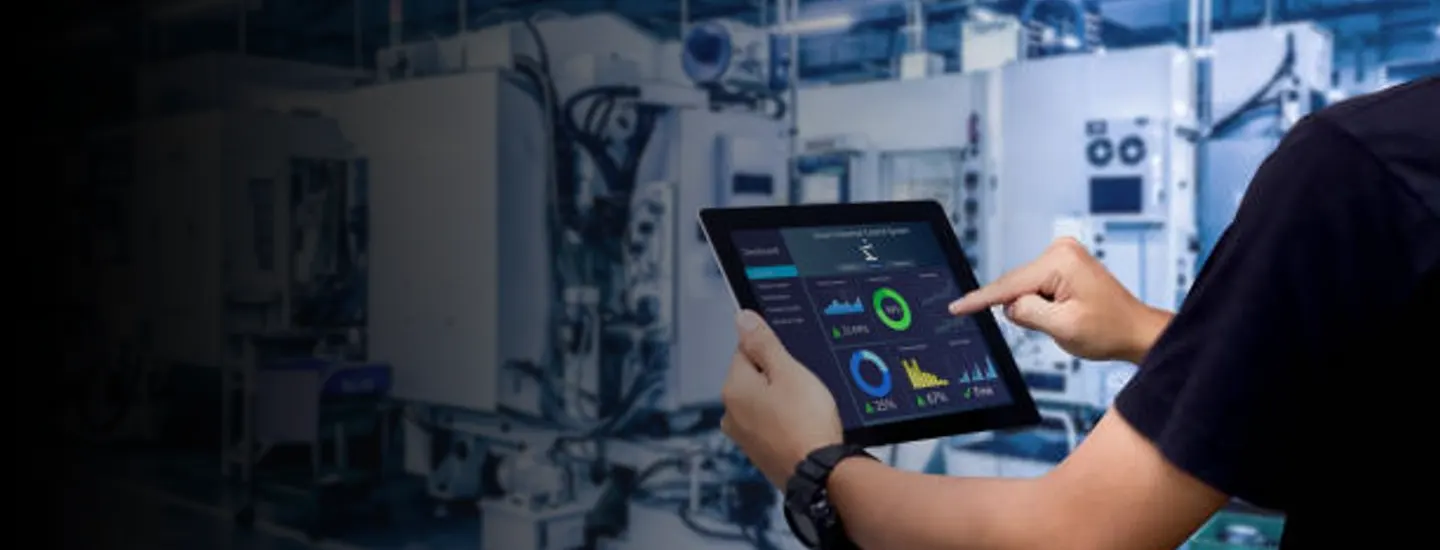Manufacturing is a consistent driver of technological evolution. Industrialization – the ability to produce more, faster, and for less – is at an evolutionary nexus that for nearly a decade has been touted as the Fourth Industrial Revolution. Tangible, physical production processes are melding with digital data, algorithms, and computational power to drive industrial automation at scale. The Smart Factory is here. However, the coming of the algorithmic age doesn’t mean an overnight shift to the dreams of science fiction. Smart Factories will lead to significant progress, and companies that invest in these developments today will have a better chance of thriving in the rapidly evolving manufacturing industry of the future.
Throughout the history of industrialization, manufacturers have been relatively slow to change. The fundamentals of the manufacturing technology ecosystem – product lifecycle management (PLM), manufacturing execution system (MES), and enterprise resource planning (ERP) – have incrementally evolved over the last 50 years compared to other technology domains. The concept of bringing digital to the shop floor has been one of the top C-suite priorities. However, most digital manufacturing initiatives fail to deliver value or lag behind in adoption. This can be overcome by keeping humans at the center of change and using technology advancements such as Smart Factory, Industrial AI, Robotics, to enable the digital workforce that will eventually make Industry 4.0 a reality.
Digital transformation has four key foundational pillars that serve as building blocks in achieving the factory of the future vision. These include Cloud Computing, Big Data, Internet of Things (IoT), and Artificial Intelligence and Machine Learning (AI/ML). Cloud computing, cloud data platforms, and big data tools democratize compute power and unlock the power of data at unparalleled scale. When paired with the Industrial Internet of Things (IIoT), Robotics, and AI to generate real-time insights and drive autonomous decision making, the factory of the future becomes an interconnected, automated, and data-driven shop floor. They also help improve factory worker productivity, enabling higher output per worker at a lower cost.
The promise of Smart Factories is multi-dimensional but comes back to the same roots as industrialization – how to manufacture goods faster, easier, and cheaper. Most companies already leverage robotic process automation to efficiently and accurately build products, from automobiles to appliances and more. Increasing plant efficiency and output to some commentors signals increased job displacement in the manufacturing sector, leading to new roles to ensure the Smart Factory is achieving its objectives.
As a starting point, COOs need to view IT and Operations as working in tandem to streamline shop floor and manufacturing processes and provide real-time visibility into KPIs and Metrics, keeping the digital worker at the core. Creating a digital-savvy worker requires the upskilling of the traditional worker and arming them with digital enablers such as performance dashboards, Augmented Reality (AR), robots, and sensors, that allow them to boost productivity and minimize time spent on repetitive as well as non-value add activities.
In addition, these digital enablers ensure higher quality of products and service, improve safety standards and Environment, Health, and Safety (EHS) compliance, and increase resiliency of shop floor technologies from cyber threats. The final frontier of AI can be achieved by implementing targeted use cases – Yield Improvement, Line Optimization, Dynamic Production Scheduling, Capacity Utilization, Overall Equipment Effectiveness – that leverage the building blocks of cloud, big data, IoT, and harness data from multiple source systems to unlock and deliver value in the form of improved throughput at lower cost of operations.
Though advanced manufacturing facilities are becoming increasingly common, companies need to be proactive and start preparing today to stay competitive, improve efficiency, and reduce costs. While digital manufacturing promises increased efficiency, productivity, and output, the transformation is complex. The challenges, including legacy systems, startup costs, skills gaps, value chain integration, and cybersecurity are daunting and cumbersome.
To address these challenges, a comprehensive strategy is required, especially to identify the potential near-term and long-term return on investment. Though digital manufacturing’s adoption has been incremental over the first decade of the fourth industrial revolution, it’s accelerating and will become mandatory to stay competitive. Companies will need to plan and execute on their factory of the future goal, not as a sprint, but rather a marathon. Step changes today will one day become exponential technology gaps between industry leaders and laggards. The companies that invest in advanced technologies today will be better positioned to succeed in the rapidly changing manufacturing industry of the future.




